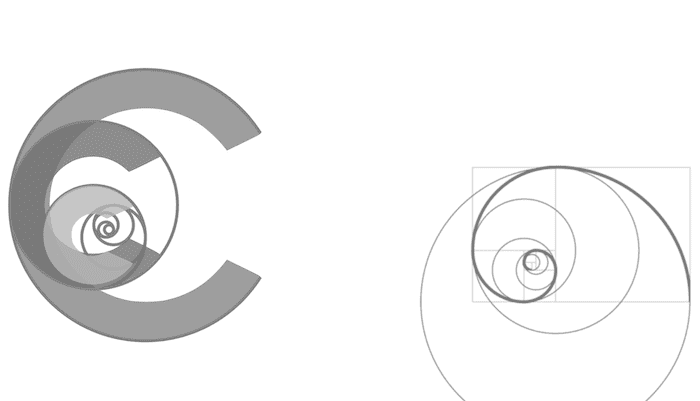Shock
PEARLS
- Shock is a life-threatening globally insufficient delivery and/or utilisation of oxygen at the cellular level
- Four main broad categories: Cardiogenic, Hypovolaemic, Obstructive, Distributive
- Early recognition and treatment are key to preventing irreversible organ dysfunction
DEFINITION
Shock is a life-threatening state where there is globally insufficient delivery and/or utilisation of oxygen at the cellular level(1). It is characteristically (but not always) associated with low blood pressure and impaired tissue perfusion. The consequence of shock is cellular and tissue hypoxia and ultimately cellular death and organ dysfunction.
Early effects of shock can be reversible, however, a delay in diagnosis or without appropriate and timely treatment can lead to irreversible damage including multiorgan dysfunction syndrome (MODS) and death.
PATHOPHYSIOLOGY
- Oxygen delivery (DO2) is the product of cardiac output (CO) and the oxcygen content of arterial blood, where:
- DO2 (mL/min) = CO x ([1.39 x Hb x SaO2] + [PaO2 x 0.003])
- Hb (g/L), SaO2 %, PaO2 O2 pressure in mmHg, 1.39 is the theoretical O2 carrying capacity of Hb (also 1.34mL directly measured), 0.003mL = capacity of O2 in plasma
- DO2 (mL/min) = CO x ([1.39 x Hb x SaO2] + [PaO2 x 0.003])
- If there is adequate arterial O2 concentration, the CO is the main determinant of (DO2) where:
- CO = HR x Stroke volume (SV)
- Stroke volume determinants include: Preload, afterload, contractility
- CO = HR x Stroke volume (SV)
- Normal VO2 (Oxygen uptake) is about 250mL/min at rest, compared with normal global DO2 which is about 1000mL/min
- When DO2 becomes critical, inadequate supply results in a transition to anaerobic cellular metabolism and results in impaired end-organ function with the characteristic clinical signs of drowsiness, reduced capillary refill, oliguria and hyperlactataemia
- In septic shock, there is a massive proinflammatory response involving: cytokines, the complement cascade, activation of coagulation and platelet aggregation, increased arachidonic acid metabolites, reactive oxygen species and nitric oxide.
- The result is: Vasodilation, increased CO (despite impaired contractility) and reduced intravascular volume secondary to increased permeability
- DO2 in septic shock is increased, however, VO2 is also increased due to increased metabolic activity.
- Abnormalities in the microcirculation (e.g. shunting, microvascular thrombosis), as well as induced mitochondrial dysfunction drive the altered cellular metabolism and the resulting damage
CLASSIFICATION
CHOD (Classic four main types, further elaborated below)
- Cardiogenic
- Hypovolaemic
- Obstructive
- Distributive
PROVED?
- cardiogenic (Pump)
- Rhythm abnormalities (some purists exclude dysrhythmia as a cause of cardiogenic shock)
- Obstructive
- hypovolemia (Volume)
- Endocrine causes (often mixed classification, but a useful subheading to make sure endocrine causes aren’t missed!)
- Distributive (due to vasodilation)
- ? = is it real? (check the BP measurement, is the arterial line in an artery, is the transducer at the correct height?)
Remember that drugs and toxic exposures can contribute to cardiogenic, rhythm, or distributive causes of shock.
CARDIOGENIC SHOCK
Impaired contractility
- Myocardial ischemia and compliations
- Infarction — anterior MI, reinfarction, right ventricular infarction, myocardial stunning
- Acute mitral regurgitation due to papillary muscle rupture
- Ventricular septal rupture
- Left ventricular free wall rupture and tamponade
- Myocarditis
- Myocardial contusion
- Takotsubo Cardiomyopathy
- Septic shock
- Poisoning or toxic exposure including calcium channel blockers, beta-blockers and digoxin
- End stage cardiomyopathy
Dysrhythmia
- Tachycardias
- Bradycardias
Valvular dysfunction
- Severe aortic regurgitation
- Severe aortic or mitral stenosis
Left ventricular outflow tract obstruction
- Hypertrophic cardiomyopathy
- Left atrial myxoma
OBSTRUCTIVE SHOCK
Within the circulatory system
- Massive pulmonary embolus
- atrial thrombus or myxoma
- occulsive valvular lesion
- other emboli (e.g. air, amniotic fluid)
External to the circulatory system
- Cardiac tamponade
- abdominal compartment syndrome
- Tension pneumothorax
- Dynamic hyperinflation (e.g. severe asthma)
- Tension pneumomedistinum
- caval compression (e.g. supine hypotension syndrome in the pregnant female)
HYPOVOLAEMIC SHOCK
Hemorrhage
- Traumatic
- Major vessel injury
- Pelvic vessel disruption
- Massive hemothorax
- Intra-abdominal hemorrhage
- Retroperitoneal hemorrhage
- Long bone fracture
- External blood loss
- Non-traumatic
- Gastrointestinal bleeding
- Epistaxis
- Hemorrhagic pancreatitis
- Aneurysm rupture
- Ectopic pregnancy
- Postpartum
- Coagulopathy
Fluid loss
- GI losses (vomiting, diarrhoea, short gut, etc)
- Excessive diuresis (diabetes insipidus, diuretics)
- Excessive diaphoresis (heat-related illness)
- Diabetic ketoacidosis
- Burns
- “Third spacing” (pancreatitis, severe sepsis, anaphylaxis)
- Iatrogenic (post-dialysis)
DISTRIBUTIVE SHOCK
- neurogenic shock
- liver failure
- adrenal insufficiency
- anaphylaxis
- septic shock
- post-bypass vasoplegia
- drugs and toxic exposures, e.g. calcium channel blockers, epidural anaesthesia
ENDOCRINE AND METABOLIC CAUSES OF SHOCK
- Adrenal insufficiency
- Hypothyroidism
- Hyperthyroidism
- Diabetic ketoacidosis
- Severe acidosis/ alkalosis and electrolyte disturbances (e.g. hypocalcemia)
? (ERRORS AND ARTEFACTS)
- non-invasive blood pressure measurement error
- arterial line inadvertently sited in a vein
- arterial line transducer position higher than the right atrium
HAEMODYNAMIC VALUES IN DIFFERENT TYPES OF SHOCK
| CI | PCWP | CVP | SVR | DO2 | |
| Septic shock | ⇧ | N or ⇩ | N or ⇩ | ⇩ | ⇧ |
| Cardiogenic shock | ⇩ | ⇧ | N or ⇧ | ⇧ | ⇩ |
| Hypovolaemic shock | ⇩ | ⇩ | ⇩ | ⇧ | ⇩ |
| Obstructive shock | ⇩ | N or ⇧ | ⇧ | ⇧ | ⇩ |
References and Links
Introduction to ICU Series
Introduction to ICU Series Landing Page
DAY TO DAY ICU: FASTHUG, ICU Ward Round, Clinical Examination, Communication in a Crisis, Documenting the ward round in ICU, Human Factors
AIRWAY: Bag Valve Mask Ventilation, Oropharyngeal Airway, Nasopharyngeal Airway, Endotracheal Tube (ETT), Tracheostomy Tubes
BREATHING: Positive End Expiratory Pressure (PEEP), High Flow Nasal Prongs (HFNP), Intubation and Mechanical Ventilation, Mechanical Ventilation Overview, Non-invasive Ventilation (NIV)
CIRCULATION: Arrhythmias, Atrial Fibrillation, ICU after Cardiac Surgery, Pacing Modes, ECMO, Shock
CNS: Brain Death, Delirium in the ICU, Examination of the Unconscious Patient, External-ventricular Drain (EVD), Sedation in the ICU
GASTROINTESTINAL: Enteral Nutrition vs Parenteral Nutrition, Intolerance to EN, Prokinetics, Stress Ulcer Prophylaxis (SUP), Ileus
GENITOURINARY: Acute Kidney Injury (AKI), CRRT Indications
HAEMATOLOGICAL: Anaemia, Blood Products, Massive Transfusion Protocol (MTP)
INFECTIOUS DISEASE: Antimicrobial Stewardship, Antimicrobial Quick Reference, Central Line Associated Bacterial Infection (CLABSI), Handwashing in ICU, Neutropenic Sepsis, Nosocomial Infections, Sepsis Overview
SPECIAL GROUPS IN ICU: Early Management of the Critically Ill Child, Paediatric Formulas, Paediatric Vital Signs, Pregnancy and ICU, Obesity, Elderly
FLUIDS AND ELECTROLYTES: Albumin vs 0.9% Saline, Assessing Fluid Status, Electrolyte Abnormalities, Hypertonic Saline
PHARMACOLOGY: Drug Infusion Doses, Summary of Vasopressors, Prokinetics, Steroid Conversion, GI Drug Absorption in Critical Illness
PROCEDURES: Arterial line, CVC, Intercostal Catheter (ICC), Intraosseous Needle, Underwater seal drain, Naso- and Orogastric Tubes (NGT/OGT), Rapid Infusion Catheter (RIC)
INVESTIGATIONS: ABG Interpretation, Echo in ICU, CXR in ICU, Routine daily CXR, FBC, TEG/ROTEM, US in Critical Care
ICU MONITORING: NIBP vs Arterial line, Arterial Line Pressure Transduction, Cardiac Output, Central Venous Pressure (CVP), CO2 / Capnography, Pulmonary Artery Catheter (PAC / Swan-Ganz), Pulse Oximeter
LITFL
Books and Journal Articles
- (1) Haseer Koya H, Paul M. Shock. [Updated 2021 Jul 26]. In: StatPearls [Internet]. Treasure Island (FL): StatPearls Publishing; 2022 Jan-. Available from: https://www.ncbi.nlm.nih.gov/books/NBK531492/
- Marshall, S., Cadogan, M., Celenza, A., Ruedy, J. and Brown, A., 2011. Marshall & Ruedy’s On Call: Principles & Protocols: Australian Version. Elsevier Australia.
- Bersten, A. and Soni, N., 2014. Oh’s Intensive Care Manual. 7th ed. Elsevier.

Critical Care
Compendium
Chris is an Intensivist and ECMO specialist at The Alfred ICU, where he is Deputy Director (Education). He is a Clinical Adjunct Associate Professor at Monash University, the Lead for the Clinician Educator Incubator programme, and a CICM First Part Examiner.
He is an internationally recognised Clinician Educator with a passion for helping clinicians learn and for improving the clinical performance of individuals and collectives. He was one of the founders of the FOAM movement (Free Open-Access Medical education) has been recognised for his contributions to education with awards from ANZICS, ANZAHPE, and ACEM.
His one great achievement is being the father of three amazing children.
On Bluesky, he is @precordialthump.bsky.social and on the site that Elon has screwed up, he is @precordialthump.
| INTENSIVE | RAGE | Resuscitology | SMACC
ICU Provisional Fellow BMedSci [Newcastle], BMed [Newcastle], MMed(CritCare) [Sydney] from a broadacre farm who found himself in a quaternary metropolitan ICU. Always trying to make medical education more interesting and appropriately targeted; pre-hospital and retrieval curious; passionate about equitable access to healthcare; looking forward to a future life in regional Australia. Student of LITFL.

